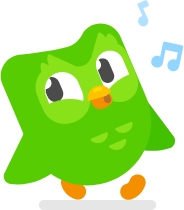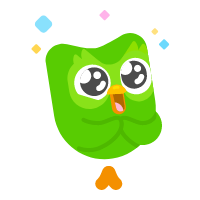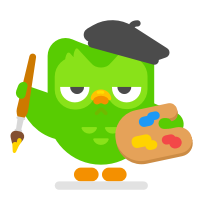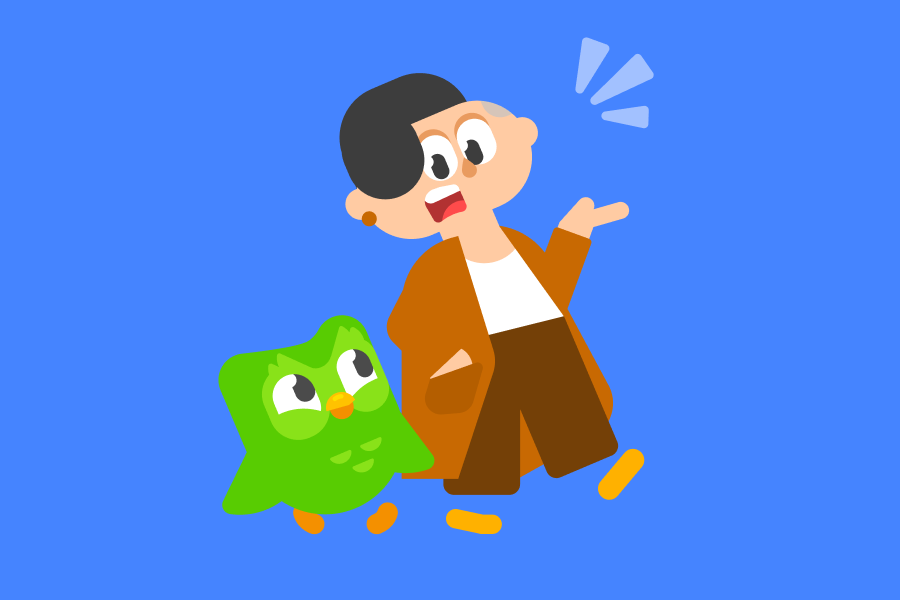Everyone loves a good fun fact—especially those of us at Duolingo! Whether you’re looking for an ice breaker when meeting a new coworker or want to wow your friends with your boundless knowledge, you've come to the right place. Here are seven amazing language facts that will make you look like the smartest in the room!
All the bells and whistles
Did you know that there are languages around the world that can be entirely whistled?! The sound of a whistle reaches farther than spoken language, so people in communities around the world developed whistled versions of their language to communicate across longer distances (such as mountainous areas). But, how can they tell apart words and sounds in the whistled version? Just like you do for any spoken language! The shape of the mouth, placement of the tongue, the pitch and rhythm, and other features change in whistled languages just like in their spoken versions.

The alphabet of Aloha
Languages vary drastically in the number of sounds they have, so it's no surprise that they can have really different numbers of letters or characters, too! Not to mention there are many ways of matching writing to sounds, or writing to syllables, or writing to whole meanings. (And English is a great example of how messy alphabets can be!) Hawaiian, for example, has a much smaller number of sounds than some other languages, like English. That's why Hawaiian has only 13 letters in their alphabet! And unlike English, which uses the same letters to mean different sounds, Hawaiian sticks very close to the 13 letters.
THe THing about “TH”
Speaking of sounds and letters, the “th” sound in English “THanksgiving” or “THeater” is actually pretty uncommon in languages around the world. That’s why many English learners have a hard time producing this sound… because it’s not in their first language! Even in English, there are many dialects around the world that replace the “th” sound with other sounds like “f” or “t.” For example, in the Cockney dialect of London, “thank you” is pronounced “fank you.”
Simultaneous signing
If you’ve only ever studied spoken languages, you’re used to learning to say words or meanings one at a time: First you say “the,” then you say “cat,” then you say “yawns.” But in signed languages, words and meanings can be produced at the SAME. EXACT. TIME. That’s right: Since signers use both hands, plus facial expressions and their bodies, to communicate, they often sign multiple words at once! Amazing! The left hand could be forming one word, the right hand another, and even movement between them could be expressing a third meaning.

On a scale from one to… twenty-seven?
The number systems you are most familiar with probably group numbers by tens or twenties. Some even mix these two systems: In French, you group by ten (ten, twenty, thirty, etc) until eighty or quatre-vingt, which translates to “four twenties.” Beyond these two number systems, there is even more variety! Oksapmin, a language in Papua New Guinea, uses a base-27 counting system and groups bigger numbers into chunks of 27! The words for the numbers 1 through 27 come from twenty seven different body parts, starting from right to left. So, in Oksapmin, to tell someone you have one sibling, you would say you have thumb (tipun) siblings. If you want to buy 15 eggs, you would ask for “other-side eye” (kin tən) eggs, since the body part term for 15 is the left eye.
Color me intrigued
In the world’s languages, there seems to be a hierarchy of basic color terms—or the simplest, most direct color words. If you describe your mashed potatoes as “white,” you’re using a basic color term, but if you say they’re “creamy eggshell,” that’s not a basic color term. Some basic color terms (like black, white, and red) are more common in languages around the world, and are lower on the hierarchy of colors. Visualize it like this:
Level 0: black, white
Level 1: red
Level 2: green or yellow
And so on. So if a language has a word for green, it will also have words for red, black, and white. If your language doesn’t have a word for green, it probably won’t have words like blue, purple, or other less-basic colors that fall higher in the hierarchy. Of course, this doesn’t mean that speakers of these languages don’t describe more than six colors, but they likely use other descriptive words to explain the other colors! English, Spanish, and French have a lot of basic color terms, but there are languages with even more: Hungarian distinguishes between two kinds of red, and Russian has two basic color terms for blues!

Spilling the tea
Beyond the fact that chai tea is a double name, this warm, steeped beverage has an interesting linguistic history! There’s a divide around the world between the languages that call the drink tea (or something similar) and those that use chai (or something that sounds like chai). The division goes all the way back to the spice trade! The term for this cozy cup of caffeine depends on how a community first encountered it. Ch’a (Mandarin for tea) spread to Russian (чай chai), Persian (cha), Greek (tsai), Arabic (shay), and Turkish (çay). On the other hand, tea, which comes from the word in Amoy (also spoken in China!), spread to Europe due to the Dutch East India Company. That’s why you’ll see thé in French, té in Spanish, and Tee in German.
You won’t be at a loss for words!
And that’s a fact.
